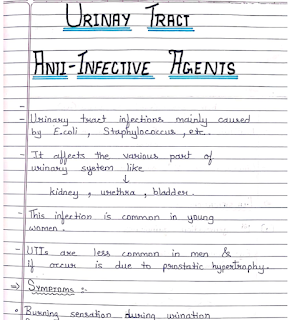Urinary Tract Anti-Infective Agents
Quinolones: SAR of quinolones
- Nalidixic Acid
- Norfloxacin
- Enoxacin
- Ciprofloxacin*
- Ofloxacin
- Lomefloxacin
- Sparfloxacin
- Gatifloxacin
- Moxifloxacin
Detail Explanation
Urinary tract anti-infective agents are an important class of medications specifically designed to treat infections in the urinary tract caused by various bacterial pathogens. Among these agents, quinolones are widely recognized for their effectiveness and broad spectrum of activity.
Quinolones work by targeting bacterial DNA gyrase and topoisomerase IV, enzymes essential for bacterial DNA replication, transcription, repair, and recombination. This mechanism ensures a rapid bactericidal effect, making these agents highly effective even in severe infections.
The Structure-Activity Relationship (SAR) of quinolones has been extensively studied to enhance their potency and pharmacokinetics. First-generation quinolones like Nalidixic Acid provided initial success but had limitations, including a narrow spectrum and poor bioavailability. Second-generation agents like Norfloxacin and Ciprofloxacin overcame these challenges, offering increased activity against Gram-negative organisms and improved tissue penetration. Later generations, such as Moxifloxacin and Gatifloxacin, further expanded the spectrum to include Gram-positive pathogens and anaerobes.
Quinolones remain a cornerstone in the treatment of urinary tract infections (UTIs) and are often preferred due to their high efficacy, good oral absorption, and favorable safety profiles. However, concerns about emerging resistance necessitate careful use and adherence to prescribed regimens.
Info!
If you are the copyright owner of this document and want to report it, please visit the copyright infringement notice page to submit a report.

